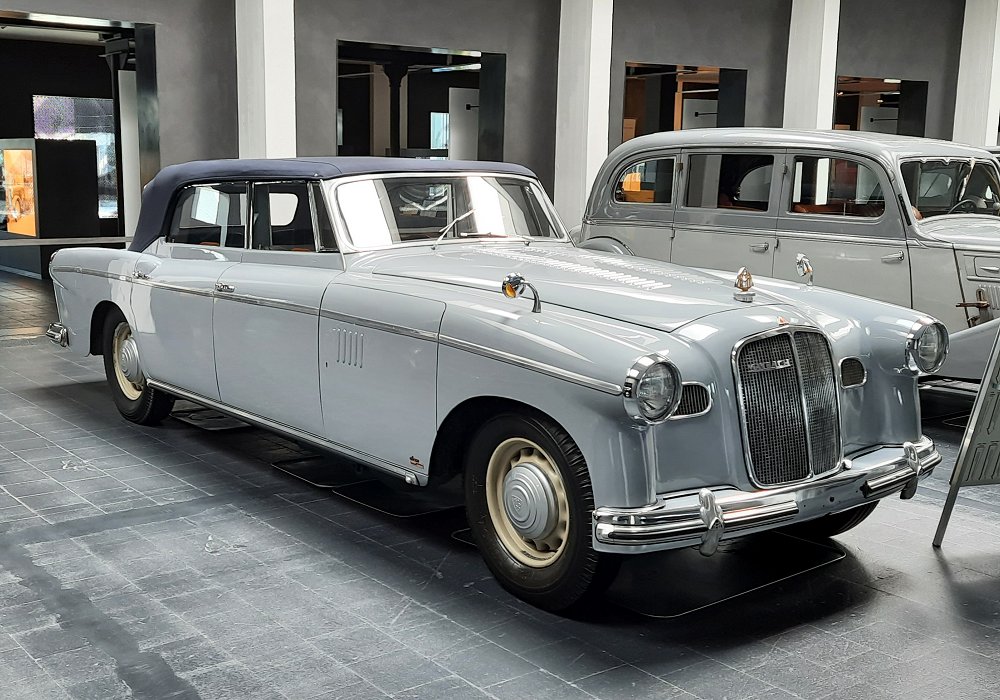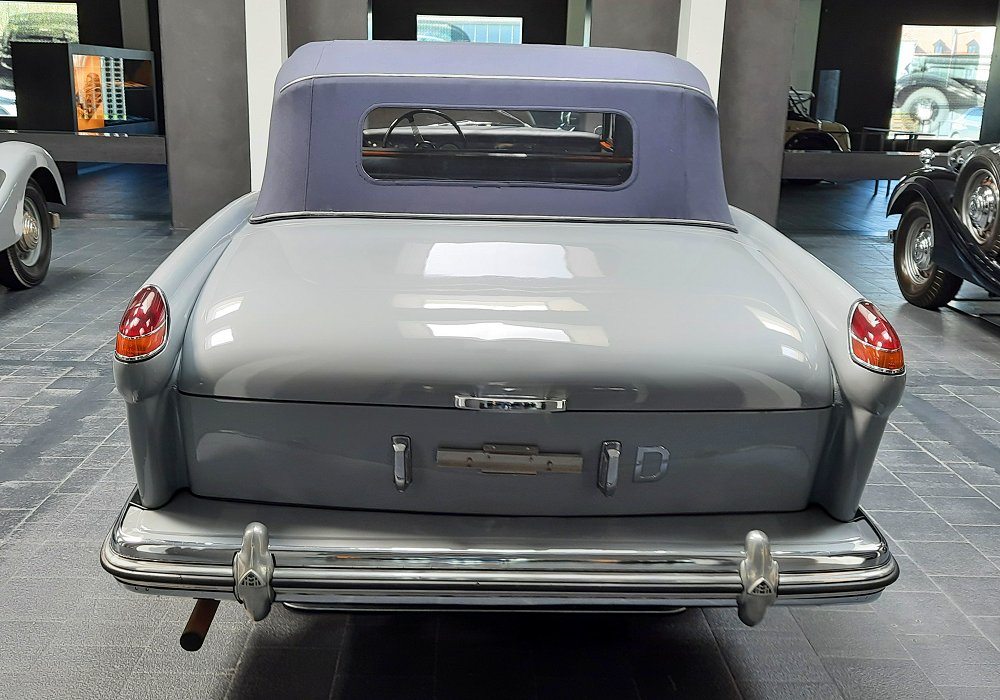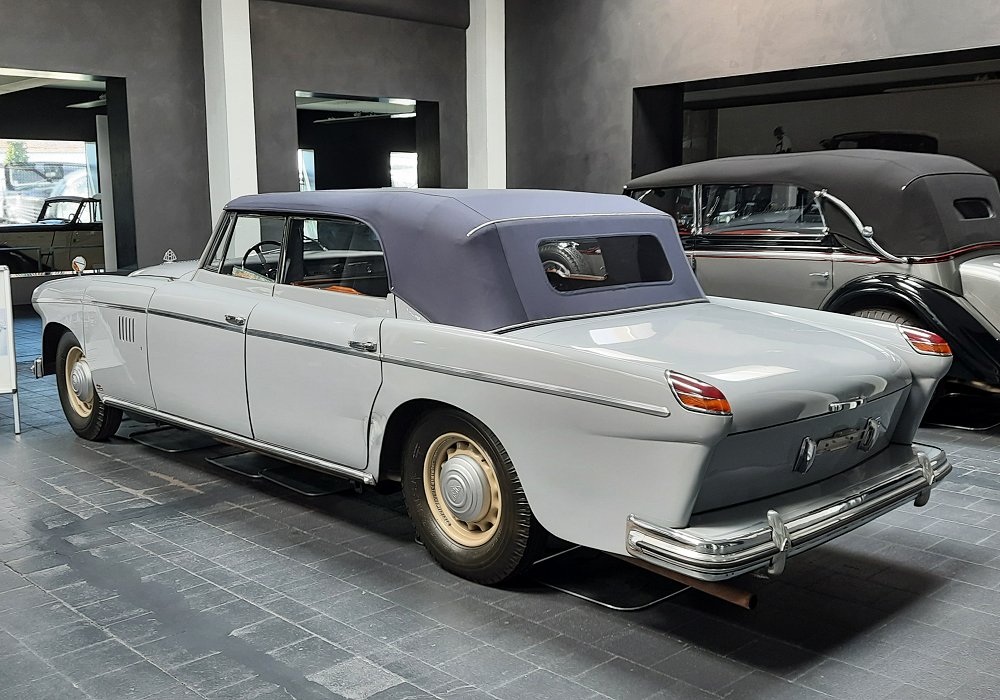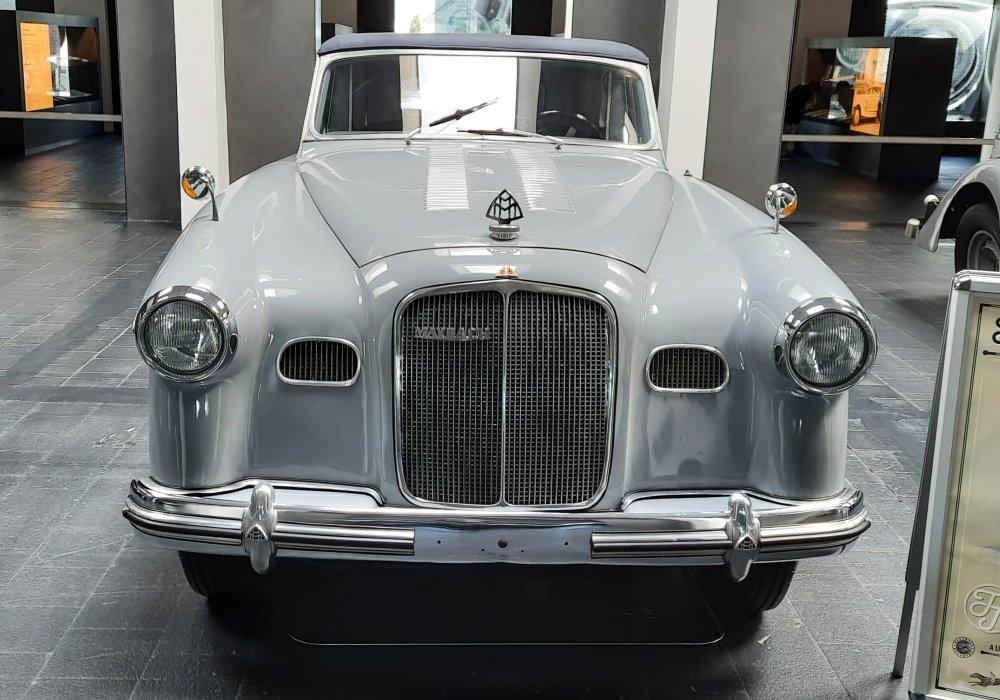Description
The Maybach SW 42 Ponton-Cabriolet by Spohn was one of the most distinctive and technically advanced open luxury cars built in Germany just before the Second World War. Created on Maybach’s final and most powerful pre-war chassis, and bodied by Spohn — Maybach’s preferred coachbuilder and one of the finest ateliers in Europe — the Ponton-Cabriolet combined modern, streamlined styling with the brand’s renowned engineering refinement. It stood apart from the more traditional cabriolets and Pullman bodies of the era, offering a more contemporary, flowing aesthetic that anticipated post-war design trends.
The SW 42 chassis, introduced in 1939, represented the culmination of Maybach’s independent-suspension series. Its 4.2-litre straight-six engine, equipped with a clutch-operated Roots-type supercharger, delivered around 160–170 horsepower. This was a remarkable figure for the period and placed the SW 42 among the most powerful German luxury cars of its time. The engine was exceptionally smooth, quiet and flexible, reflecting Maybach’s heritage in precision aero-engine construction. Even with elaborate coachwork, it provided effortless acceleration and serene cruising ability.
The chassis design was equally sophisticated. Maybach’s Schwingachse swing-axle independent rear suspension, combined with an independent front suspension system, gave the SW 42 outstanding ride comfort and stability. This was a significant advantage at a time when many luxury marques still relied on rigid axles. The long wheelbase offered exceptional composure at speed, while the rigid box-section frame provided the strength necessary for Spohn’s large, intricate cabriolet bodywork. Maybach’s semi-automatic preselector gearbox, paired with a torque converter, allowed seamless gear changes without the need for a clutch pedal under most conditions, contributing to the car’s refined character.
The Ponton-Cabriolet body created by Spohn was one of the most visually modern designs mounted on a Maybach chassis. While many SW 42 cabriolets followed traditional pre-war lines, the Ponton style embraced a cleaner, more unified shape, with integrated fenders and smoother transitions between body panels. This design anticipated the “ponton” look that would dominate post-war automotive styling in the 1950s. The front and rear wings flowed into the body rather than standing apart from it, giving the cabriolet a cohesive, aerodynamic silhouette.
The soft-top folded neatly into a sculpted rear deck, preserving the car’s elegant proportions when open. Spohn’s hand-formed metalwork displayed exceptional craftsmanship: the curves were smooth and continuous, the panel gaps precise, and the overall impression was one of refined modernity. Despite its advanced styling, the car retained the grandeur and presence expected of a Maybach, with long lines, dignified proportions and unmistakable luxury.
Inside, the SW 42 Ponton-Cabriolet Spohn offered a level of craftsmanship equal to the finest pre-war luxury cars in the world. The cabin was trimmed in the softest leathers, with hand-polished hardwood veneers, thick carpeting and finely machined metal fittings. Maybach’s aviation-inspired instrumentation added a sense of technical elegance. Seating was generous and deeply upholstered, designed for both comfort and long-distance touring. As with all Maybachs, the interior could be extensively customised to the original owner’s preferences, often including bespoke cabinetry, heater units, vanity sets, special interior lighting and tailored storage compartments.
On the road, the Ponton-Cabriolet delivered a superbly refined and composed driving experience. The supercharged straight-six provided smooth, abundant power, while the independent suspension absorbed road irregularities with exceptional ease. The long wheelbase and stable chassis made the car feel calm and sure-footed at any speed. Steering was deliberate but precise, well suited to the car’s grand-touring nature, and large hydraulic drum brakes provided strong stopping power for a vehicle of its size.
Production of the SW 42 was extremely limited due to its enormous cost and the onset of the Second World War soon after its introduction. Spohn-bodied Ponton-Cabriolets were even rarer, built only to special order and requiring a significant amount of hand labour. As a result, surviving examples today are exceptionally scarce and highly prized by collectors, representing some of the finest achievements in pre-war luxury automotive design.
The Maybach SW 42 Ponton-Cabriolet Spohn remains a remarkable symbol of late-1930s technical ambition and stylistic innovation. It combined cutting-edge engineering, extraordinary craftsmanship and forward-looking design at a time when the world of luxury motoring was about to be transformed. Elegant, powerful and beautifully balanced, it stands as one of the most sophisticated and visually striking body styles ever mounted on a Maybach chassis — a rare masterpiece from the twilight of pre-war European luxury.





